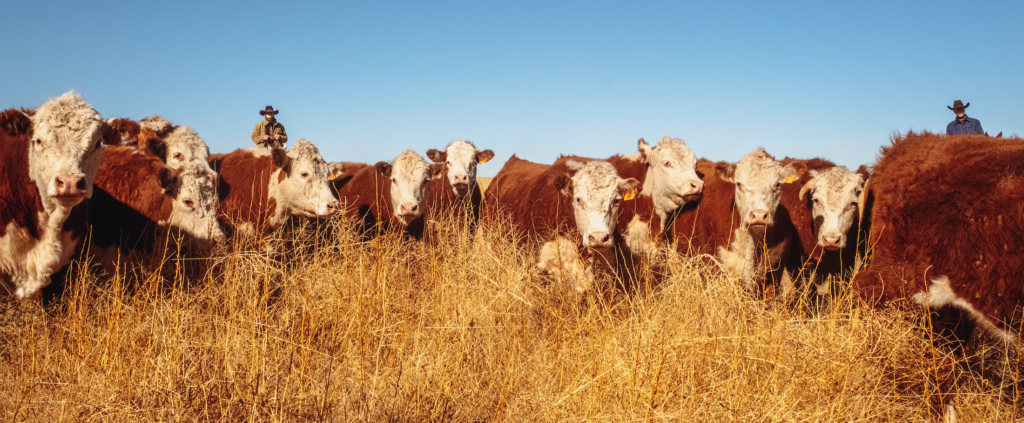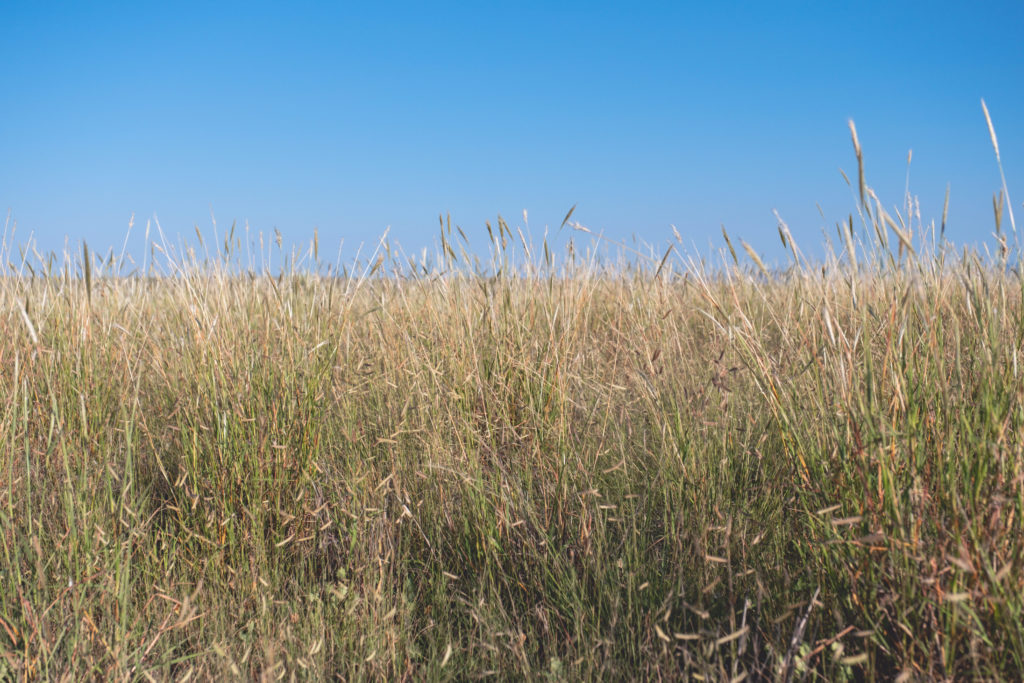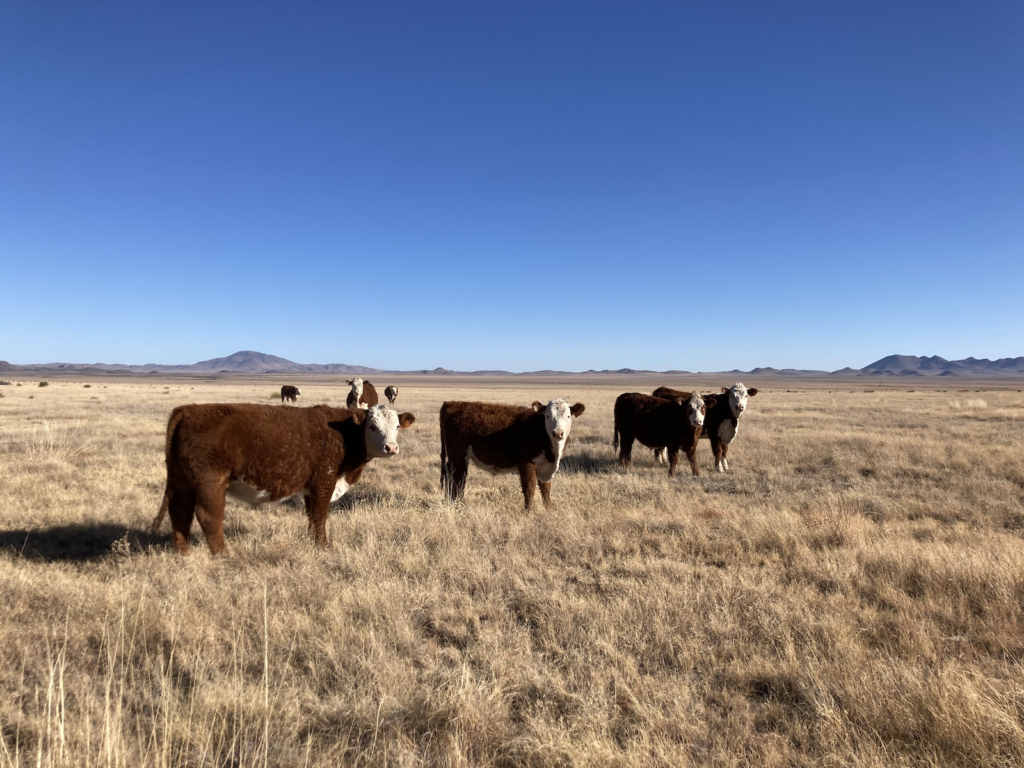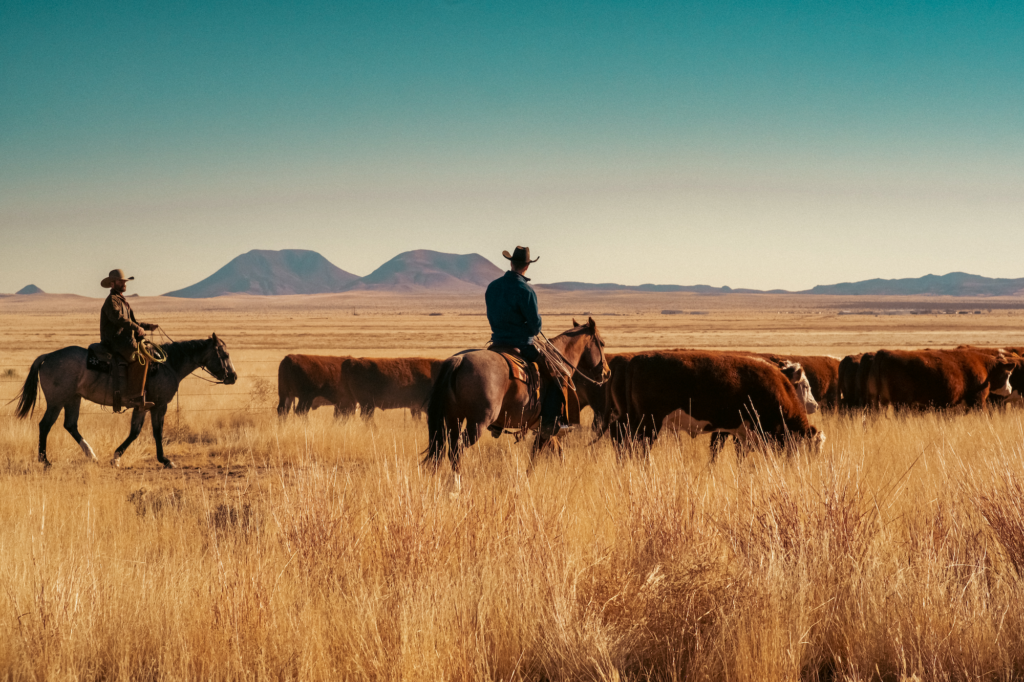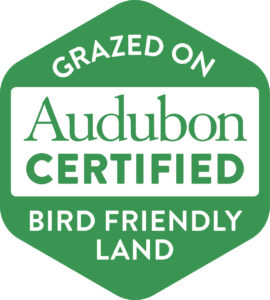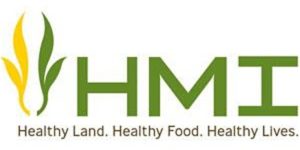Dixon Water Foundation’s mission is to promote healthy watersheds through good land management. With much of the desert southwest considered “not prime farmland”, millions of acres are devoted to raising cattle to meet economic and food production needs. Many of the native prairies within the North American Great Plains have seen grazing pressure from large, hoofed, ruminants such as bison for eons. One of our land management tools is mimic this historical animal disturbance through a planned cattle grazing approach. Our planned grazing involves a multi-pasture design in which we can control the grazing and recovery periods.
We view this as a nature-based approach to grassland management that promotes the growth of healthy vegetation, increasing the capacity of the landscape to process and hold water, promoting wildlife habitat, and providing healthy conditions for the cattle that are born and raised on our ranches.
Our Mimms Unit ranch is located in Far West Texas at just below a mile in elevation within the Marfa Grasslands of the Chihuahuan Desert. These grasslands play an integral role in the life-cycle of migratory birds that breed in the Northern Great Plains in the spring and summer, and spend their winter months in the lower latitude grassland of the southwestern US and northern Mexico. Other wildlife species, such as pronghorn, or antelope, are native to these grasslands. Grazing in a way that considers the needs of these wildlife species is important as their presence indicates that their needs are being met and that the grasslands are able to function properly. The services that the grasslands provide in the cycles of water, minerals, and carbon are crucial to us all. The semi-arid grasslands of the Chihuahuan Desert are also subjected to periods of high winds and dry periods with a blazing-hot sun. These conditions can be harsh in a brittle environment, meaning that plant cover is essential to protect the soil, which is itself the foundation that supports not only the plants above, but also serves as a sponge for air and water, and hosts insect and microbial communities that make these essential cycles possible.
The Mimms Unit ranch is a research and demonstration ranch set up to compare different approaches to cattle grazing and their impacts on grassland health. The ranch features an area continuously grazed by one cow-calf herd and another area grazed in a multi-paddock approach by a separate cow-calf herd. These herds are set to the same stocking rate over the acreage where they graze.
Our herds give birth to their calves between August and October. We calf during this time of the year because it coincides with the latter-portion of our growing season in West Texas, meaning that the mother and calf have access to more available forage to get them through these trying early stages of the calves’ life. The following year, in the spring, we wean the calves from their mothers. Young females, called heifers or unbred cows, will re-enter the cow-calf herd around the age of 2 when they are ready to be reproductive.
Castrated males, or steers, are separated out into their own herd. These steers will graze in a portion of the ranch currently devoted to our grass-finished operation. These steers graze on native grasses, with occasional hay supplement to get them through the winter and dormant season.
Once the steers reach 2 years old, they are driven from the pasture on horseback to our working pens, where they are ultimately shipped through the Grassfed Livestock Alliance (GLA) to be butchered and sold at Whole Foods Market. The Grassfed Livestock Alliance and Whole Foods Market negotiate a fair and consistent price that helps reduce some of the uncertainty of the beef market. Beef shipped from the Mimms Unit is also certified by Audubon’s Conservation Ranching program as Beef Raised in Bird-Friendly Habitat.

Steers that participate in these programs have to be raised following particular guidelines. To qualify for the GLA program, we can supplement grass on the prairie with hay, for instance when the steers are in the holding pens being prepared to ship, but the hay mixture can only contain grass or alfalfa. Alfalfa is a legume, but is accepted in the program, whereas grain such as corn, or animal products intended to provide additional protein are not accepted. Cattle in this program are also allowed to have a mineral component to their diet. We often use molasses tubs with our herds.
In order to qualify for these programs, our operation is also subject to a third-party auditor that reviews the welfare of the animals we raise. Treating sick individuals is part of taking care of our animal herds. If we do need to treat a steer with an antibiotic, we will do so to make sure that animal is not suffering, however that individual will be removed from our grass-finished sales and sold through an alternative method.
At Dixon Water Foundation, we believe that cattle can be raised in harmony with the native prairies. Ranching is one of many tools that can be used to steward natural resources and provide for human needs as well. Just like any tool, responsible use requires consideration and planning.
Not all cattle operations are the same. Some producers may not want to introduce additional oversight and protocol to their own operation. Additionally, separating out steers to enter into their pastures devoted to grass-finishing may be undesirable or unfeasible for other producers. We see the Grassfed Livestock Alliance and Audubon Bird-Friendly Beef programs as being in alignment with our mission to promote healthy watersheds through good land management. By raising animals that are adapted to thriving on native grass, we are able to keep thousands of acres of rangeland in food production while also conserving habitat for wildlife that utilize these grasslands. By keeping the grasslands intact, with good habitat for wildlife, good groundcover, and healthy soils, these grasslands will be also be able catch more rainfall, reduce runoff and erosion, and sequester more carbon.
This article is also available as a video:
